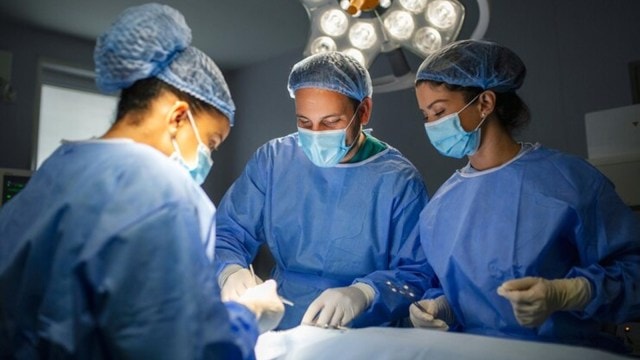📣 For more lifestyle news, click here to join our WhatsApp Channel and also follow us on Instagram
In first-ever case, surgeon contracts cancer from patient; we ask an oncologist to explain the possibility
Published in The New England Journal of Medicine, the case was originally reported in 1996 and has recently resurfaced
 Explore the rare case of a German surgeon contracting cancer from a patient during surgery. Learn about cancer transmission risks and the measures to mitigate them. (Source: Freepik)
Explore the rare case of a German surgeon contracting cancer from a patient during surgery. Learn about cancer transmission risks and the measures to mitigate them. (Source: Freepik)In a startling and unprecedented medical case, a 53-year-old surgeon in Germany is believed to have contracted cancer from a patient during surgery. Published in The New England Journal of Medicine, the case was originally reported in 1996 and has recently resurfaced.
The patient, a 32-year-old man, was undergoing surgery for a rare malignant fibrous histiocytoma—a soft tissue cancer diagnosed in approximately 1,400 cases annually. The surgeon accidentally cut his hand while inserting a drain during the procedure. Despite immediate disinfection and bandaging, the event set the stage for a bizarre chain of events.
Five months later, the surgeon discovered a hard, 1.2-inch tumour-like swelling at the base of his left middle finger, precisely where the injury had occurred. A biopsy revealed that the tumour was malignant and genetically identical to the cancer of the patient he had operated on. This led the medical team to conclude that tumour cells from the patient had entered the surgeon’s wound, leading to the development of cancer.
 Further analysis of the tumours confirmed their identical genetic makeup, cementing the link between the patient’s cancer and the surgeon’s tumor. (Source: Getty Images/Thinkstock)
Further analysis of the tumours confirmed their identical genetic makeup, cementing the link between the patient’s cancer and the surgeon’s tumor. (Source: Getty Images/Thinkstock)
Rarity of cancer transmission
Dr Neeraj Goel, Director of Oncology Services at CK Birla Hospital, Delhi, explains, “It is theoretically possible for a doctor to contract cancer from a patient, but the risk is extremely low.” Cancer transmission through surgery is rare because the immune system rejects foreign cells. However, this case revealed an “ineffective antitumour immune response” in the surgeon’s body, allowing the transplanted cancer cells to grow.
Further analysis of the tumours confirmed their identical genetic makeup, cementing the link between the patient’s cancer and the surgeon’s tumor.
Dr Goel highlights that documented cases of cancer transmission are exceedingly rare. Potential pathways include airborne exposure, contaminated instruments, or direct contact with bodily fluids, but these risks are significantly mitigated through modern surgical techniques and sterilisation protocols. “Routine medical procedures like biopsies do not cause cancer metastasis, as puncturing a cancer cell does not lead to its spread,” he emphasises.
While rare, other cases of cancer transmission include accidental exposure to leukemia cells during bone marrow procedures. Nevertheless, proving a direct link, as in this case, remains highly challenging.
📣 For more lifestyle news, click here to join our WhatsApp Channel and also follow us on Instagram



























